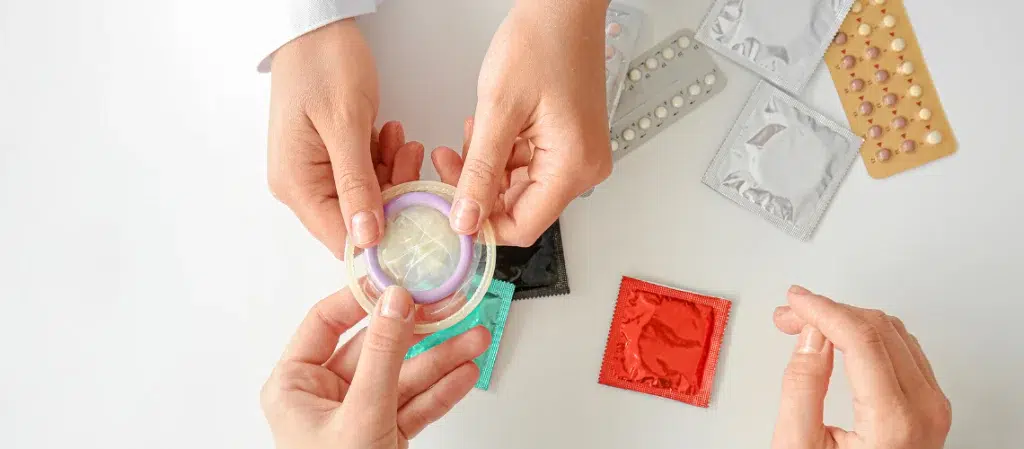Vitamin D, often called the “sunshine vitamin”, is known to most people mainly for its positive effects. But did you know that there is also such a thing as vitamin D toxicity? While this condition is relatively rare in regions like Western Europe, including the Netherlands, where sunshine hours are limited, it can still occur. Surprisingly, the majority of cases of vitamin D toxicity result from excessive intake of supplements and not from food or sunlight exposure itself.
Are you curious about how to protect yourself from such an overdose and what symptoms accompany it? In this article, we go into detail on the topic of vitamin D toxicity. Read more!
What is vitamin D?
Vitamin D is also known as calciferol and is fat-soluble, meaning that it can be stored in the body’s tissues for longer periods of time rather than being excreted as urine. Vitamin D is unique because it is found in certain foods but can also be produced by our own body when exposed to ultraviolet rays. In other words, spending time outside in the sun triggers vitamin D synthesis, which is why people who do not get much exposure to sunlight are more likely to be deficient in vitamin D.
Vitamin D has multiple functions in the human body. First, it supports calcium absorption in the stomach and maintains calcium and phosphates levels in the body. Additionally, vitamin D also plays a role in bone growth and maintenance. Without sufficient vitamin D, our bones would become weak, thin and, in the worst case, even break! Vitamin D also supports processes such as cell growth, glucose metabolism, and neuromuscular and immune function. Finally, your immune system also needs vitamin D to face invading viruses and bacteria.
How much vitamin D do I need?
As with every nutrient, the amount of vitamin D you need depends on your age. Generally, the recommended amount of vitamin D slowly increases over your lifetime. Therefore, an adult over 70 years old requires twice as much vitamin D as a newborn. The average daily recommended intake of vitamin D is measured in micrograms (mcg).
| Age | Recommended Amount |
| Newborn (0 – 12 months) | 10 mcg |
| Children (1 – 13 years) | 15 mcg |
| Teenagers (14 – 18 years) | 15 mcg |
| Adults (19 – 70 years) | 15 mcg |
| Seniors (71 years & older) | 20 mcg |
How does vitamin D toxicity occur?
Vitamin D toxicity means that the vitamin D levels in your body are so high that they cause harm. Vitamin D has the characteristic of being a fat-soluble vitamin. Unlike water-soluble vitamins, fat-soluble vitamins are stored in body tissues and can build up over time. Therefore, consuming too much vitamin D can result in toxicity.
Vitamin D toxicity is a convoluted process that isn’t fully understood at this time. It is known, however, that the active form of vitamin D works similarly to a steroid hormone. It passes across cells, instructing them on how to switch genes on and off.
Most vitamin D in the body is stored, linked to either vitamin D receptors or carrier proteins.
When vitamin D intake is excessive, levels may rise to the point where there is no more space on the receptors or carrier proteins. This might result in higher quantities of “free” vitamin D in the body, which can move within cells and overwhelm vitamin D-dependent signalling systems.
Increased calcium absorption from the digestive tract is one of the most important signalling pathways. As a result, hypercalcemia, or high calcium levels in the blood, is the most common indication of vitamin D toxicity. Calcium can bind to other tissues and cause harm; therefore, high calcium levels in the blood can produce a variety of symptoms, including kidney problems.
How much vitamin D is too much?
As mentioned before, excessive vitamin D consumption via dietary supplements is usually the cause of excessively high vitamin D levels. You can’t obtain too much vitamin D from sun exposure alone because your skin can only produce a certain quantity of vitamin D. There is a recommended daily limit of vitamin D that you should not exceed, regardless of whether you obtain vitamin D through sunshine, food, or supplements.
| Age | Maximum Daily Dose |
| 0 – 6 months | 25 mcg |
| 7 – 12 months | 38 mcg |
| 1 – 3 years | 63 mcg |
| 4 – 8 years | 75 mcg |
| 9 – 18 years | 100 mcg |
| 19 years & older | 100 mcg |
Symptoms of vitamin D toxicity
Hypercalcemia, or a build-up of calcium in the blood, is the most common symptom of vitamin D toxicity. Early symptoms of hypercalcemia include:
- Weakness
- Diarrhoea
- Constipation
- Vomiting
- Nausea
- An altered level of consciousness
- Excessive thirst
- Kidney failure
- High blood pressure
- Excessive thirst
Treatment of vitamin D toxicity
Hypercalcemia induced by taking large quantities of vitamin D pills on a daily basis might take months to cure. This is because vitamin D is stored in body fat and released slowly into the bloodstream. The best way of treating vitamin D intoxication is avoiding sun exposure and removing all dietary and supplement sources of vitamin D.
References
Bjarnadottir, M. A. S. (2021, November 9). How Much Vitamin D Is Too Much? The Surprising Truth. Healthline. Retrieved 8 March 2022, from https://www.healthline.com/nutrition/how-much-vitamin-d-is-too-much#TOC_TITLE_HDR_5
National Institutes of Health. (n.d.). Office of Dietary Supplements – Vitamin D. Vitamin D Factsheet for Consumers. Retrieved 8 March 2022, from https://ods.od.nih.gov/factsheets/VitaminD-Consumer/Office of Dietary Supplements – Vitamin D. (n.d.). Factsheet Vitamin D. Retrieved 8 March 2022, from https://ods.od.nih.gov/factsheets/VitaminD-HealthProfessional/




